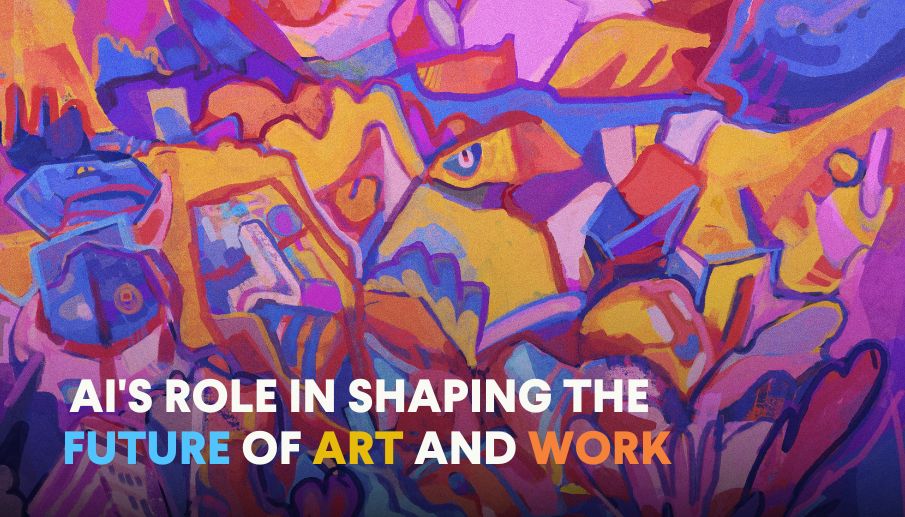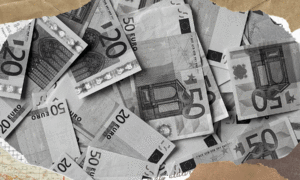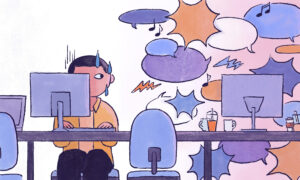
AI’s Role in Shaping the Future of Art and Work
Its presence is undeniable, with 77% of devices now utilising some form of artificial intelligence. From medical diagnoses to self-driving cars, AI is rapidly embedding itself into various industries, often with profound and remarkable implications. For example, the Flywire project utilised AI to map a fruit fly’s brain, analysing 21 million images and identifying an astonishing 139,255 neurons and 50 million synapses—a feat made possible by AI’s remarkable pattern recognition abilities.
However, the widespread adoption of AI has also triggered anxieties about its impact on the workforce. PWC’s extensive survey revealed that 30% of workers fear technology will replace their jobs within the next three years. According to the Microsoft Work Trend Index 2023 report,in India, a significant 74% of the workforce expresses fear over AI’s potential impact on their jobs. However, a recent survey by Sage Publications suggests that this panic might be somewhat exaggerated, with only 13% of jobs lost to AI so far. Interestingly, despite these widespread concerns, the Work Trend Index Survey also revealed that 83% of Indian workers are willing to delegate as much work as possible to AI to reduce their workload.
I like to think that this contrast captures the irony and complexity of the relationship with AI: while it sparks fear of job loss, many are simultaneously embracing it to make their work easier.
An Artist’s Perspective
As an artist and graphic designer, I’ve also been grappling with similair concerns surrounding AI, and the gut-wrenching thought that my years of skill development have become redundant. The anxieties don’t end there either, platforms we use to share our work also often exploit content to train AI systems, raising significant privacy issues that extend beyond the art world.
There is sadness that the expertise I’ve cultivated over time is becoming obsolete, and the fact that from now on, most artistic processes have become much less time consuming – creating a more saturated market and an easier entry level, potentially leading to a devaluation of existing expertise. I do realise that less time and a lower entry level is a positive thing – we’re freeing up so much time to just think rather than do, and that’s definitley going to help creativity in the long run. That being said, creators risk being reduced to facilitators of AI tools, rather than the original drivers of creativity. This trend is already seen in fields like content writing. In a recent survey, 81.6% of digital marketers believe AI threatens content writers.
With AI rapidly improving in visual production, fine artists face growing competition in an already fast-paced, content-driven environment.
The Harsh Truth
Art and technology have always been deeply interconnected, with innovations continually reshaping the creative process. Tools like Photoshop and digital cameras have transformed how we create and experience art. The ability to capture a scene instantly with a photograph doesn’t diminish the value of a painting; each medium offers its own unique expression. Photography, far from simply replicating reality, may allow artists to focus on elements like composition, lighting, and emotional depth, thanks to the speed of capturing an image. This ease of creation and manipulation opens up new avenues for artistic experimentation, much like what we’re seeing with the rise of AI in art today.
While AI-generated art challenges traditional practices, art also remains rooted in personal choices and communication. I personally believe that the value of art still lies in its creator’s unique experience and perspective, something AI cannot simply replicate (sometimes a stroke in an artwork is based on an almost infinite number of inconsequentual and seperate decisions or motivations, not just replications of results like AI).
It’s undeniable that AI will play a major role in the future of art. Skills like fine arts, digital painting, and photography will still be valued, but AI is fundamentally transforming how we approach them. Take animation, for instance. I’ve always admired it, but the sheer number of hours required for just a few seconds of footage kept me from ever really considering the art form. Now, AI can drastically reduce that workload. Need a picture, an animation, or an article? AI can create these with remarkable speed—though they still require refinement. It would be shortsighted to reject these advancements simply because they challenge our traditional sense of hard work.
One last thing to note is that while AI accelerates production, the mastery of core skills will remain essential, especially when it comes to guiding AI effectively. Without a solid foundation of knowledge, how can we ensure the output is of high quality? While the barrier to entry may lower across mediums, true expertise will still be needed to direct AI toward meaningful results. The real challenge lies in ensuring we don’t become overly dependent on technology – let’s avoid recreating Wall-E.
Embracing the Future
It’s true that headlines about AI-induced job displacement can be alarming. But the reality is more nuanced. While some jobs will be impacted, some estimates suggest that AI will actually create more jobs than it eliminates by 2025.
Most people are already using AI in some form, and many agree that it’s here to assist them by reducing their workload. In a SnapLogic survey involving 400 employees, 81% view AI as a tool that can significantly reduce their workload, allowing them to concentrate more on creativity and strategy. Furthermore, 61% of office workers reported that AI enhances their efficiency and productivity, while 49% credited it with improving their decision-making abilities. Additionally, 51% of respondents believe that AI helps them achieve a better work-life balance.
Organisations are also increasingly eager to adopt AI, according to Capgemini, 82% are planning to integrate them within the next 1–3 years. There’s already widespread trust in AI to handle tasks like drafting emails, coding, and data analysis, reflecting its growing role in the workplace.
AI has already become an integral part of many people’s work lives. Even with my initial reservations, I use it daily for tasks like content writing and idea generation, and it has been a significant help.
By embracing AI while continuously developing our skills, we can harness its potential to boost efficiency, enhance creativity, and unlock new opportunities and paths that may have previously been out of reach.





